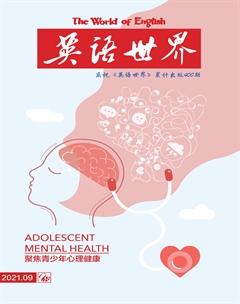《中西文明对比》选译(五)
梁昊/译
【譯者言】 机器翻译基于对翻译系统所带语料库里语料的计算,这样做有两个优点:第一,可以根据词频选择最常用的对应词,保证译文有比较高的准确率;第二,语料库范围内的词义、用法不会有遗漏。不过,目前的机器翻译软件也有两个缺点。第一个缺点是,原文里万一出现超出语料库词汇范围的表达式,机器便束手无策。例如本篇的agon,机器和译者都是第一次遇到,机器一般只能照搬原文或音译为“阿贡”或“阿攻”,这等于没有译,具有一定智能的翻译软件可能会根据与agon外形接近的派生词agony的意思,将之译成“痛苦”,但并不奏效。人工翻译的路径是,先查阅权威的《牛津英语词典》(OED),了解agon的词源及其各派生词的意思,再参考国内收词量最大的《英汉大词典》,当发现该词典给出的两个对应词无一符合原文上下文允许的意思时,就根据agon的词源义,结合原文学科背景,将agon译成“诘驳”。机译软件的第二个缺点是,当需要根据上下文选择一个多义词的某一义项时,机器往往不如人工。例如本篇里的formal,在不同上下文里的意思可以是“形式”“正规”“注重形式”,但这几个义项机器都没有选,却选了最常见但不符合上下文的“正式”。类似案例还有productive、marked、knew、learning、style、intellectual等多义词的义项选择。
Walter Ong:
Agon3 in Western Education
Introduction:
Father Walter J. Ong (1912-2003) was trained by Jesuits to be a priest4 in the days when agon in the form of oral disputation was still part of their educational method. The implicit contrast with the Chinese tradition is startling. In Chinese history, there have been few recorded instances of oral debates before an audience, those mostly involving Buddhist doctrines. Chinese thinkers very often disagree with each other, but they typically express their criticisms cautiously and in writing, sometimes years or even centuries later.
Contest, Language, and Education in the Western Tradition5
Historically, some of the most conspicuous manifestations of agon in the human world around the globe have been in speech itself. In distant ages, speech, together with thought, was a highly combative activity, especially in its more public manifestations—much more combative than we in our present-day technological world are likely to assume or are even willing to believe. ... The ancient Greeks fascination with confrontational language shows in their abundant works on rhetoric and dialectic and in formal logic, which grew out of dispute6. The Greeks polarized yes and no as never before. The Greek fascination with the agonistic structures of speech and thought spread and continued throughout the West, not only in the study of rhetoric, dialectic, and logic, but in many less immediately conspicuous ways. …
The ancient Greek word for what we mean by contest in English is agon, which means an assembly, an arena, an action at law, a contest. … The fact that the term for an assembly in ancient Greece is also an action at law or a contest7 calls attention to the litigiousness8 (eagerness for legal disputes9) of the Greek world. An assembly, a getting together to discourse, was essentially a mobilization for contest. The assembly came together to debate, to match pros and cons, to struggle, not fatally, but seriously, man against man. The legislative body was, and still is, an organization for productive10 struggle. …
In the West, the agonistic tradition of formal education was deeply rooted in Greek antiquity, as already suggested. It persisted not merely through Medieval dialectic and disputations and Renaissance scholarly polemic, but with remarkable11 vigor well into the 18th century, as shown, for example, in the formal12 and contest-oriented conceptions of the founders of the United States of America (as expressed in the US Constitution) …
When the agonistic mode of education was functioning at its maximum—as, for example, in Medieval and Renaissance universities—a student was not formally taught13 to be “objective” about knowledge. … What was taught in the formal educational operation14 was to take a stand in favor of a thesis (the leading assertions in a doctoral dissertation) and to attack another thesis that someone else defended. Defense of theses and attacks on theses marked procedures for the teaching15 not only of such subjects as philosophy, law, and theology, but also of physics (then known as natural philosophy), and medicine. Young men at Harvard College in the 17th century defended theses about logic, rhetoric, and grammar. They learned subjects largely by arguing over them. …
The ancient Greeks and Romans knew16 and used alphabetic writing, but they felt it to be at the service of oral speech. So did the Medieval universities, although these new institutions were far more script-oriented than antiquity had been: they depended on texts for their learning17 and even lectured on texts, thus looking ahead to our present-day teaching style rather than back to that of classical antiquity. But for all their literacy, Medieval universities remained basically oral and deeply agonistic in life-style and intellectual style18. They did not use writing at all to test intellectual achievement. Writing was employed to a considerable extent in the learning of Latin at elementary schools, but at the universities there were no assigned papers19, no written examinations. All testing was conducted orally by disputations or debate-like viva voce (Latin: “live-voice”) examinations. …
Much of the thrust of the agonist tradition in Western education sketched here was connected with the 1,500-year history of Learned Latin20, which was only disestablished in the 1960s in such traditional settings as Oxford and Cambridge Universities and globally in the Roman Catholic liturgy. Latin functioned at its peak at the time of the Renaissance in Europe. …
By the Renaissance—and indeed for some centuries before21—Learned Latin was eminently qualified as an instrument for a puberty rite (coming-of-age ritual for young males). After the 7th century Learned Latin was no longer a mother tongue in the most real sense of this term: it was not used by mothers to raise22 their children. Thus, learning Latin moved boys out of their families into the tribe once Latin became a sex-linked23 language, used only by males (with negligible exceptions). The spoken use of Latin became dependent on writing rather than vice versa (Latin: “the other way around”).
沃尔特·翁:
西方教育中的诘驳
导读
沃尔特·翁(Walter J. Ong,1912-2003)神父是经过耶稣会会士的训练成为一名祭司的,那时口头辩论形式的诘驳依然是他们的一种教育方式。这种方式隐含的与中国传统教育方式的反差令人吃惊。中国历史上有关当众辩论的记载寥寥无几,而这些仅有的记载也多涉及佛教教义。中国思想家们常常彼此见解不同,但他们批评他人一般很谨慎,而且往往诉诸笔头。有时得等多年,甚至几百年后,才能见到这些批评意见。
西方传统中的竞赛、语言和教育
回顾历史,全球人类社会最显而易见的一些竞赛(agon)形式一直存在于言语本身。在远古时代,言语连同思想,尤其是其比较公开的表现形式,都极具对抗性。这种对抗异常激烈,身处当今技术世界的我们难以想象,甚至都不愿意相信。……古希腊人对对抗性语言的迷恋反映在他们留下来的大量论述修辞和辩证法以及形式逻辑学领域的著作,该学科即争辩的产物。希腊人认为凡事非对即错,这种两极分化观达到前所未有的程度。他们迷恋诘驳式的言语和思想,这种迷恋传遍西方,并延续至今,不仅在修辞学、辩证法和逻辑学研究方面是这样,在许多不太显而易见的方面也是如此。……
古希腊文里agon这个词的意思与英文contest的意思相当,指集会、竞技、诉讼、竞赛。……古希腊文表示集会的词也表示诉讼或竞赛,这一语言现象让人注意到希腊社会的诉讼精神(即对法庭争辩的热衷)。集会即聚在一起说话,本质上是动员人们参加竞赛。人们集会进行辩论,正反两方对垒,你争我斗,虽不至于到你死我活的地步,却是男子汉之间的严肃斗争。作为集会的一种形式,立法机构当时是,现在仍是,一个可进行有成效辩论的组织。……
我们已看到,在西方,正规教育的诘驳传统深深植根于希腊远古时期。它不仅贯穿中世纪的辩证法、争辩和文艺复兴时期的学术论战,而且直至18世纪仍相当有活力。例如,美利坚合众国的创建者们都具有这种注重形式的、以竞赛为导向的观念(美国宪法就体现了这一点)。……
当诘驳模式的教育发挥最大作用时,例如像中世纪和文艺复兴时期的大学教育那样,学生接受的正规教育不是教他看待知识要“客观”。……而是要他选择一个立场,支持一个论点(thesis,即一篇博士论文的主要断言),攻击另一个人辩护的论点。对一个论点的辩护和对反方论点的诘驳是当时教学法的特点,不仅哲学、法学、神学之类学科是这样,物理学(旧时称自然哲学)、医学也如此。17世纪哈佛学院的青年才俊曾为逻辑学、修辞学和文法领域的一些论点进行辩护,他们学习各种科目的方式主要是就这些科目进行争辩。……
古希腊和古罗马人认识并使用拼音文字,但他们认为文字是为口语服务的。中世纪的大学也这样认为,不过这些新高校对文字的重视远超古代:师生的学问依赖文本,教师甚至讲授文本,因此是向我们当代的教学方式靠拢,而不是回归古典时代的教学方式。中世纪的大学尽管很重视读写,在生活方式和思想方式上依旧基本是口头的,诘驳式的。学校根本不藉助书写来测试学生们在思想上有什么长进。在小学的拉丁文教学中,书写的分量相当重;然而大学却不布置论文写作,也没有笔试。所有测验都口头进行,或通过争辩,或举行类似辩论的口头(viva voce,拉丁文,意思是现场口头)考试,即答辩。……
这里勾勒出的西方教育中的诘驳传统,其推力大部分与有1500年历史的学业拉丁文(Learned Latin)有关;直到1960年代,这种拉丁文才在牛津、剑桥之类传统学术机构和全球的罗马天主教礼仪中被废弃。拉丁文发挥作用的巅峰是歐洲文艺复兴时期。……
到文艺复兴时期,其实不如说在那之前几百年里,学业拉丁文都有十足的资格作为青春礼(青年男子成年礼)的一个工具。7世纪后,拉丁语就不再是真正意义上的母语了,因为母亲不再用拉丁语教养孩子。如此一来,一旦拉丁成为一种与性别挂钩的语文,仅为男性所用(例外很少,可忽略不计),男孩子们为了学习拉丁文,便走出家庭,进入部族。拉丁口语变得依赖于书写而不是书写依赖于口语。
1北京外国语大学英语学院讲师;1999 年获北京外国语大学英语语言文学硕士学位,2007 年获北京外国语大学英语语言文学博士学位。研究领域是英中对比语言学、英语史和语法化。 2北京外国语大学长青学者、外国语言研究所教授,广西师范大学漓江学者、外国语学院教授;1985 年北京外国语大学英语语言文学硕士毕业,1996年获英国剑桥大学英语历史语言学博士学位。研究领域是语言学、英中对比与翻译、双语词典学。 3 agon这个词一般英文案头词典不收。陆谷孙主编的《英汉大词典》里可以查到,给出的释义和译名是“(古希腊体育或文艺方面的)有奖竞赛”和“(古希腊戏剧中)主要人物间的冲突”(agon条下)。然而,无论用“竞赛”或“冲突”来翻译第一段中agon in the form of oral disputation里的agon都不合适。查《牛津英语词典》,agon源自古希腊文?γ?ν,词源义是聚会或集会,尤指公共游艺聚会,特指有奖竞技比赛,泛指各种竞赛或较量;其引申用法指希腊戏剧里两个人物之间的舌战或争辩(verbal contest or dispute,OED agon 条下,释义译文由笔者提供)。这个词派生出了多个词,其中常用词在语义上可分为两大分支:a. 与痛苦相关,例如agony‘痛苦,苦恼、agonize‘感到痛苦,撕裂或苦恼、agonizing‘令人痛苦,撕裂或苦恼,由agony又生发出了agony aunt‘知心大妈/知心姐姐和agony column‘知心栏目等常见词组;b. 与对抗相关,这是agon的本义,保留在antagonism‘对抗或对立情绪、antagonist‘对抗或对立方、antagonistic‘情绪对抗或对立、antagonize‘使对抗或生气,还有protagonist‘(文艺作品中)主要人物(以上各词见Oxford Advanced Learners Dictionary,对应词由笔者提供)等词中。痛苦类词于14世纪通过拉丁文agōnia借入英文(见OED agony n.条),先于对抗类词。使用频率略低于上述各词的一个派生词是agonistic,在本文中出现四次,且对理解此处agon的意思至关重要。作为修辞学术语,agonistic的意思是“好论战,好斗,力图在辩论中压倒对方”(见《新牛津英汉双解大词典》agonistic, a. 条下2. Rhet.,释义译文由笔者提供)。包括藏传佛教在内的一些宗教在传习教义的过程中一直将学员之间的两两诘驳作为一种教学方法,因此我们试将agon译为“诘驳”。 4 priest祭司(也译为司铎),通常是一个教堂的负责人。机器译文都是“神父”,不准确;father才是神父。 5改编自 Walter J. Ong. 1981. Fighting for Life: Contest, Sexuality, and Consciousness, Ithaca: Cornell University Press.
6 which指形式逻辑学,grew out of dispute因争辩而产生的,所以译为“争辩的产物”。GT的“毫无争议”是误译;DL的“这些作品是从争端中发展起来的”,“争端”不确,“发展起来”无法与“作品”搭配。 7这里is also的意思是,同一个词既表示assembly也表示诉讼或竞赛。GT的“也是一种法律诉讼或竞赛”和DL的“也是法律行动或竞赛”里的“是”都属于误译。 8 litigiousness译成“诉讼精神”比较合适。机器译文“诉讼性”既生硬,又显得隔靴搔痒。 9这里eagerness的意思是“热衷”,不是机器译文的“渴望”;legal dispute的意思是“诉讼”,不是机器译文的“纠纷”。
10 productive这里的意思是“有成效”。机器译文“生产”是误译。 11 remarkable表示一种有节制的肯定或赞赏,多数情况下可以译成“相当”。机器译文“非凡的”属于夸大。 12这里formal的意思是“注重(竞赛的)形式”,不能像机器译文那样译为“正式的”。 13机器译文“没有被正式教导……”显得生硬,“正式”与“教导”搭配不当。 14机器译文“正式的教育操作”中“正式的”与“教育操作”搭配不当,“教育”与“操作”也搭配不当。
15 marked procedures for the teaching里的mark与characterize同义,字面意义是‘标出特征,可灵活译成“是……的特点”。机器译文“标志着”没有把“特点”或“特征”的意思传达出来;所谓procedures for teaching其实就是教学法。 16 knew后接宾语alphabetic writing,意思是辨识、识读(见OALD know verb 条下8),机器译文“知道”是误译。 17 learning此处显然是“学问”,不是机器译文的“学习”。 18 life-style and intellectual style,前面的life-style既然是“生活方式”,后面的intellectual style自然只能譯成“思想方式”而不是机器译文里的“风格”。另外,intellectual常被译成“知识分子”。其实这个词的意思是“思想;智力”,与“知识(knowledge)”没有什么关系。例如intellectual history得译成“思想史”而不是“知识史”,intellectual也应该译成“思想分子”而不是“知识分子”。
19 assigned papers 即老师布置给学生的论文作业。机器译文“指定的”(GT)或“分配的”(DL)都是硬译。 20古典时代之后,各民族书面语言逐渐兴起,拉丁不再是一种母语,而是儿童上学后在学校学会的国际通用书面语,所以称为Learned Latin。既然此时拉丁是学业的一部分,我们遂将之译成“学业拉丁文”。 21 indeed起肯定并进一步补充修正的作用,相当于“其实”(见OED indeed adv. 条下phr. 3)。before后省略的是Renaissance,GT的“乃至数百年以前”,DL的“在几个世纪之前”都未能清晰说明在什么之前。 22此处讨论的是拉丁文的教养或教化作用,因此raise不宜像机器译文那样译成“抚养”。
23由于上学的一般是男孩,女孩少得可以忽略不计,所以只能在学校学习的拉丁文就与性别挂钩了(sex-linked)。机器译文“有关”不对。

